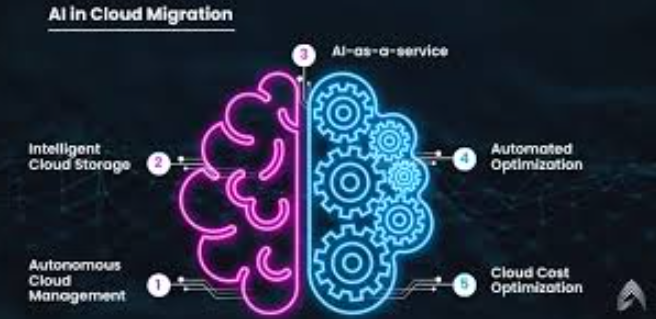Introduction
Cloud computing has revolutionized the way businesses store, manage, and process data. However, migrating workloads to the cloud remains a complex and costly endeavor. Artificial Intelligence (AI) is now at the forefront of optimizing cloud planning and migration, ensuring cost reduction, performance efficiency, and security enhancements.
This study, authored by Sasibhushan Rao Chanthati, presents a comprehensive AI-based framework for cloud migration planning, showcasing how AI-powered algorithms streamline the transition while minimizing expenses. Published in the American Journal of Smart Technology and Solutions (AJSTS), this paper provides a roadmap for leveraging AI in cloud environments.
The Role of AI in Cloud Migration
Cloud migration involves transferring applications, data, and workloads from on-premises or hybrid environments to cloud-based platforms such as AWS, Azure, or Google Cloud. While this transition offers numerous advantages, organizations often face:
- Unforeseen costs
- Security vulnerabilities
- Operational inefficiencies
- Resource misallocation
How AI Solves Cloud Migration Challenges
AI enables a smarter migration approach by:
- Predicting Cloud Resource Utilization – AI models analyze historical data and forecast the optimal cloud architecture.
- Automating Migration Processes – Machine learning (ML) algorithms handle repetitive tasks such as data classification, workload prioritization, and performance benchmarking.
- Enhancing Cost Optimization – AI ensures that organizations only pay for the resources they need, dynamically adjusting usage patterns.
AI-Powered Cloud Migration Framework
The paper introduces an AI-driven framework for seamless cloud migration. This includes:
- AI-Assisted Cloud Planning
AI analyzes workload dependencies, security risks, and infrastructure requirements, ensuring a well-structured migration process.
- Automated Decision-Making
Machine learning algorithms:
- Classify applications based on cloud compatibility.
- Recommend resource allocation strategies to avoid overspending.
- Identify security vulnerabilities in real-time.
- Cost Reduction via Intelligent Forecasting
AI predicts:
- Optimal cloud configurations to minimize cost.
- Resource utilization patterns to prevent underutilization.
- Potential risk factors that could disrupt migration.
Case Study: AI in Action
A financial institution planning its cloud transition leveraged AI to:
- Cut migration costs by 30% through AI-driven workload distribution.
- Reduce downtime using predictive analytics.
- Enhance security with automated anomaly detection.
Future Prospects of AI in Cloud Computing
As AI evolves, autonomous cloud migration will become a reality. The integration of AI with edge computing, blockchain, and quantum computing will further optimize cloud ecosystems.
Conclusion
AI-driven cloud migration is no longer an option, it’s a necessity. Organizations looking to reduce cloud costs, enhance security, and optimize resource allocation must embrace AI-based solutions.




